
About the Scouring and Processing Plant
Scouring and processing plant
that continued to protect
Water from Lake Biwa, one of the world’s softest lakes, is used for the best silk scouring.
In the scouring process, unnecessary impurities such as sericin and dirt are removed from the silk fabric.
The abundant soft water of Lake Biwa makes Hama Chirimen soft and silky.
After scouring, we stamp the Hama mark, which is the proof of Hama Chirimen brand.
receipt of goods
Various types of fabrics are received from each cooperative member. The goods are received in a round roll, called marumaki, and are accompanied by work instructions for each cooperative member, called a sokufuda (tag). The union uses digital tools to manage the entire process from receipt of goods to shipment.
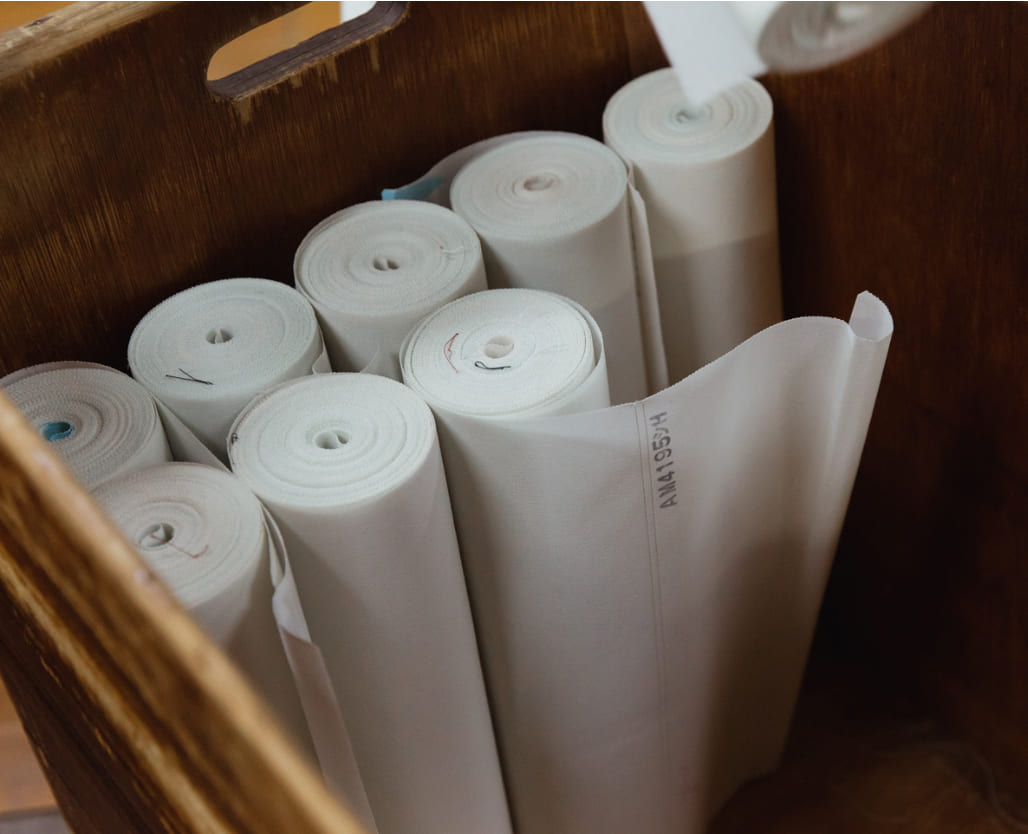
Various types of fabrics are received from each cooperative member. The goods are received in a round roll, called marumaki, and are accompanied by work instructions for each cooperative member, called a sokufuda (tag). The union uses digital tools to manage the entire process from receipt of goods to shipment.

setting out
In the process of dough preparation, the round-rolled fabric is unwound and rewound into a scouring roll called gyotomaki, and then four suspension rings are made and a suspension rod is threaded through them. The gyoton-maki process has a space in the curvature of the fabric for uniform scouring, and this series of equipment was developed by our association and is not found anywhere else.
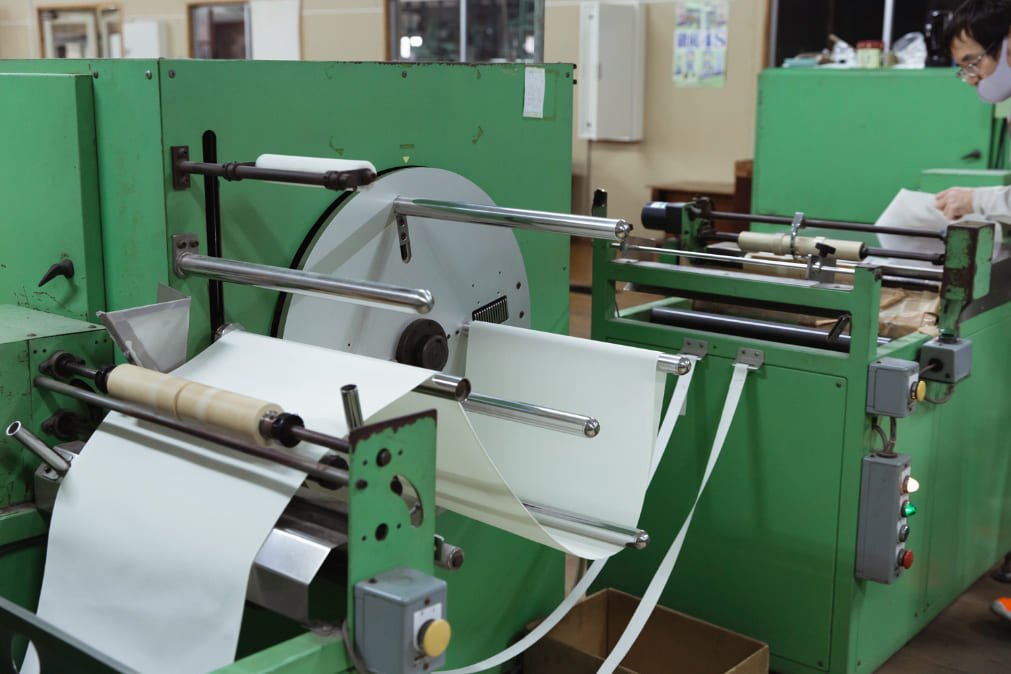
In the process of dough preparation, the round-rolled fabric is unwound and rewound into a scouring roll called gyotomaki, and then four suspension rings are made and a suspension rod is threaded through them. The gyoton-maki process has a space in the curvature of the fabric for uniform scouring, and this series of equipment was developed by our association and is not found anywhere else.

framing
The fabrics are set on the scouring frame and moved to the scouring area.

pretreatment
The fabric is thoroughly watered and placed in a pre-treatment solution heated to 98°C for one hour. The fabric shrinks the moment it is placed in the pretreatment, and approximately 60% of the sericin, which accounts for 23-25% of the raw silk, is removed during the treatment. Pre-treatment is an important process that determines the shape of the crêpe’s grain, and requires careful attention to temperature control.




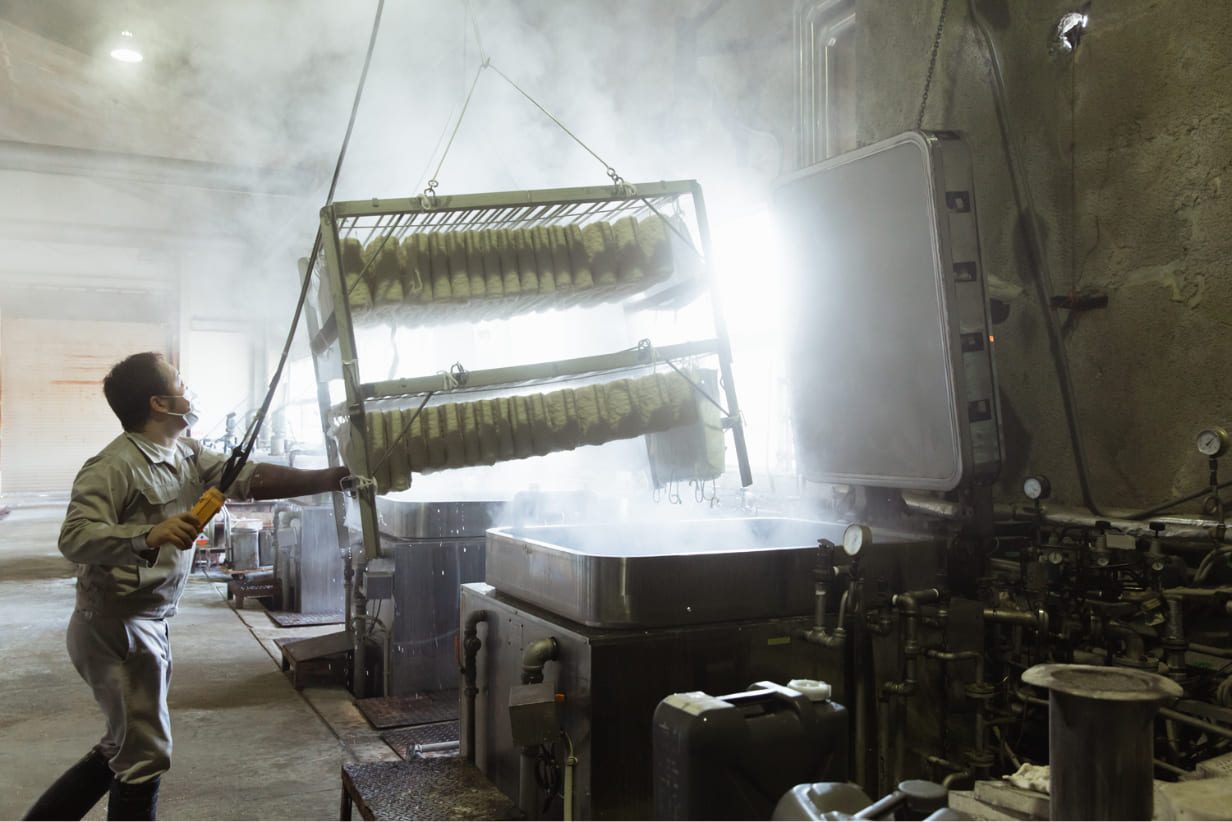
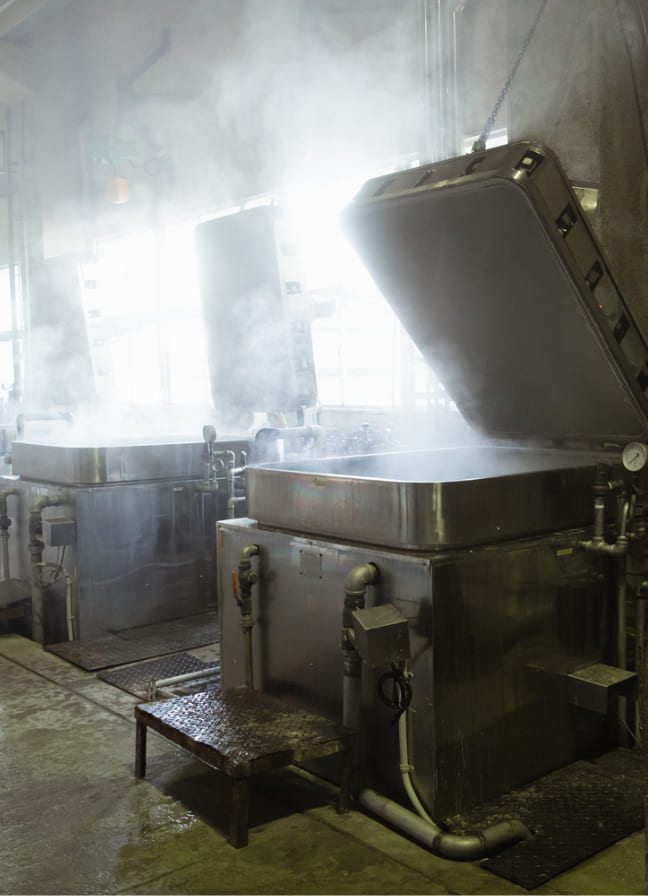
thorough kneading
After pretreatment, the fabric is placed in a high-pressure scouring machine containing a scouring solution containing alkaline soap, and undergoes the main scouring process at 120°C for about 40 minutes. This process is machine-controlled, but the operators are always careful to visually check the gauges to ensure safety first.
After pretreatment, the fabric is placed in a high-pressure scouring machine containing a scouring solution containing alkaline soap, and undergoes the main scouring process at 120°C for about 40 minutes. This process is machine-controlled, but the operators are always careful to visually check the gauges to ensure safety first.

finishing kneading
After the main kneading, finishing kneading is performed for 40 minutes. Finishing kneading does not completely remove the soapy residue from the fabric, but leaves about 1% of it, which helps the fabric to be dyed evenly.

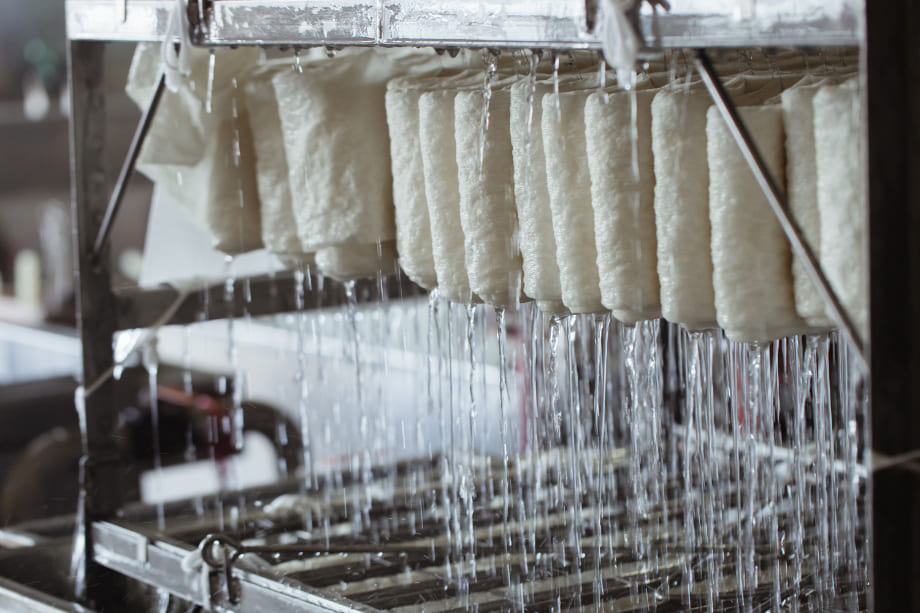
washing with water
One of the advantages of Nagahama silk production area is the abundant water from Lake Biwa. Seventy percent of the water used for scouring is used in the washing process. The water from Lake Biwa, which is soft water, is further rinsed through a water softener to make the fabric softer.
One of the advantages of Nagahama silk production area is the abundant water from Lake Biwa. Seventy percent of the water used for scouring is used in the washing process. The water from Lake Biwa, which is soft water, is further rinsed through a water softener to make the fabric softer.

dryness
After washing in water, the fabric is simply joined together with a lock sewing machine. After the fabrics have been prepared for moisture, they are passed through a cylinder dryer (drum dryer) with 24 drums to dry them completely.


putting out to sea
In the width-drawing process, a machine called a clip tenter is used to finish the fabric to the width and length specified on the bundle tag. The workers must be familiar with the elasticity of each piece of fabric and the tension operation of the clip tenter to match the elasticity of the fabric.
In the width-drawing process, a machine called a clip tenter is used to finish the fabric to the width and length specified on the bundle tag. The workers must be familiar with the elasticity of each piece of fabric and the tension operation of the clip tenter to match the elasticity of the fabric.

Flexible processing
After the width is taken out, each piece of fabric is taken to the inspection, and if a softer fabric is required, a softening process is applied. The fabric softening machine of the cooperative uses a device developed by us. This machine does not deform the fabric, only softens it.
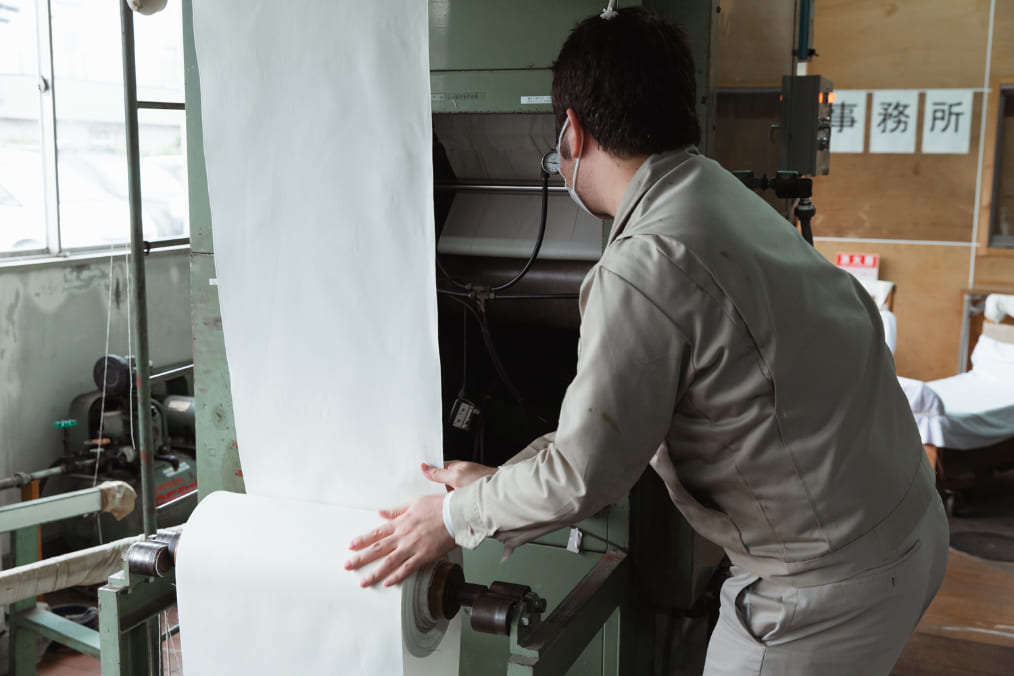
After the width is taken out, each piece of fabric is taken to the inspection, and if a softer fabric is required, a softening process is applied. The fabric softening machine of the cooperative uses a device developed by us. This machine does not deform the fabric, only softens it.

Horizontal and
vertical inspection
Horizontal and vertical inspection
The finished fabric is passed over a colored board (painted green or blue), and light is shone on it from the side to inspect for flaws, stains, and threads. After the sideways inspection, the fabric is then illuminated from behind and inspected for flaws, stains, etc., and rolled up one by one onto the core at the same time.

quantification
After completing the horizontal and vertical type inspections, problem-free fabrics are weighed to confirm that they are in accordance with the regulations written on the bundle tag. Hama Chirimen is traded on the basis of weight, so the weight specified in the quality label (10g as the smallest unit) is written on the edge of the fabric. is written on the edge of the fabric.
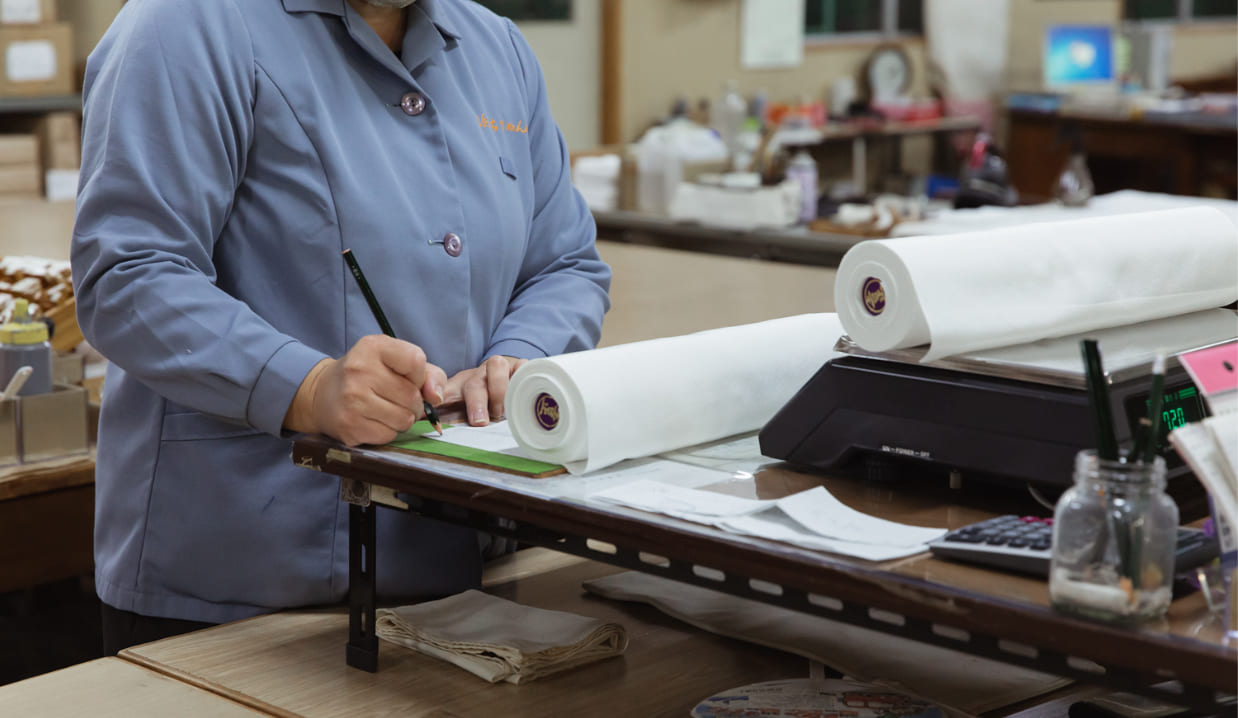

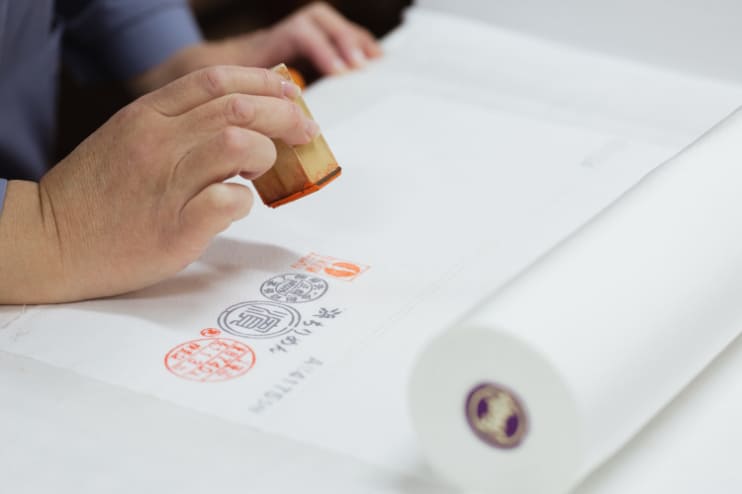
Sealing and shipping
1 grade pass, 100% Hama Chirimen silk, and Japanese silk mark are stamped under the kneading number stamped on the fabric. The union registered trademark (Hama mark) means that the fabric was woven and kneaded in the Hama Chirimen production area, and is a proof of the Hama Chirimen brand. After the seal is affixed, the fabric is carefully rolled up and shipped to each cooperative member. Each cooperative member further inspects the fabrics in-house and sells them as Hama Chirimen after double and triple rigorous inspections.
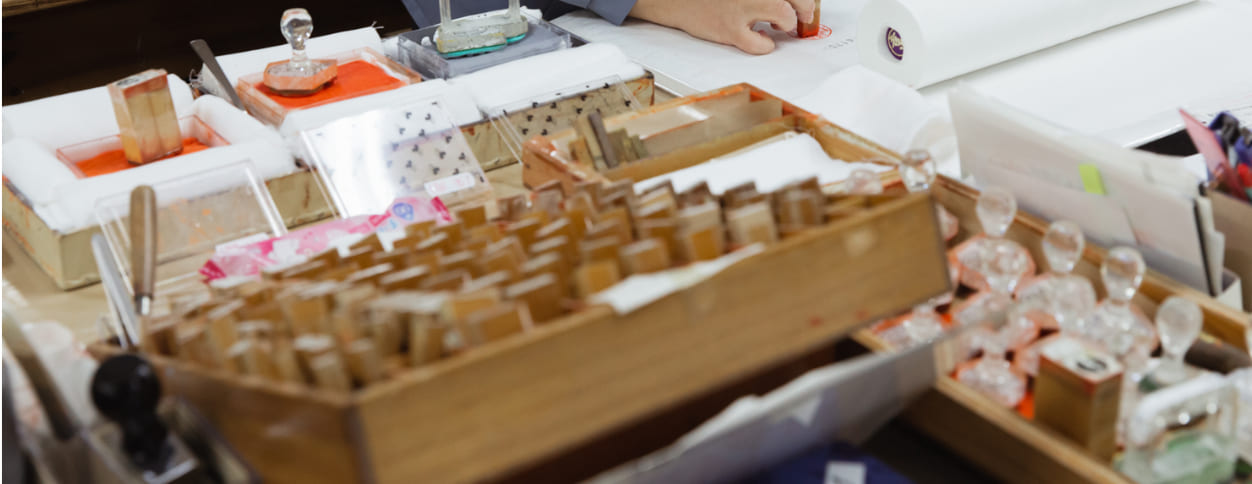
1 grade pass, 100% Hama Chirimen silk, and Japanese silk mark are stamped under the kneading number stamped on the fabric. The union registered trademark (Hama mark) means that the fabric was woven and kneaded in the Hama Chirimen production area, and is a proof of the Hama Chirimen brand. After the seal is affixed, the fabric is carefully rolled up and shipped to each cooperative member. Each cooperative member further inspects the fabrics in-house and sells them as Hama Chirimen after double and triple rigorous inspections.

